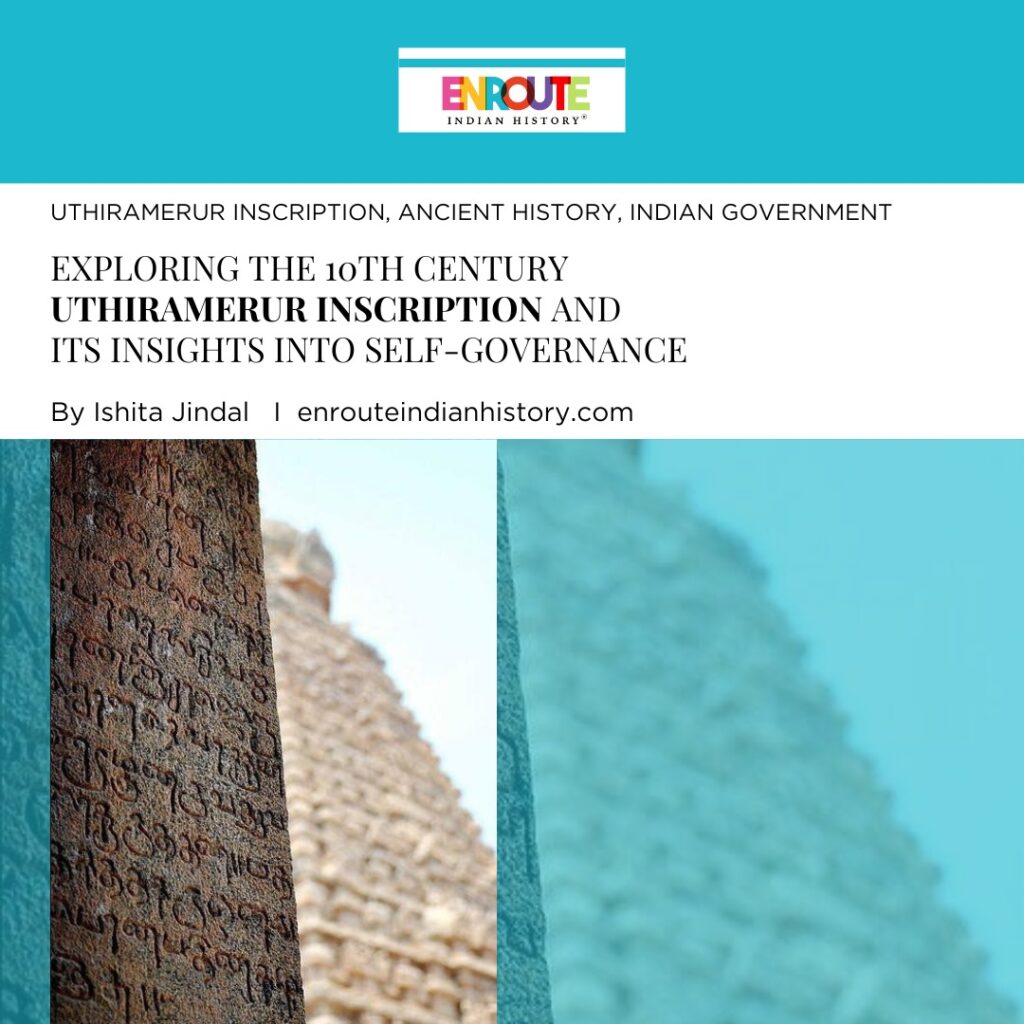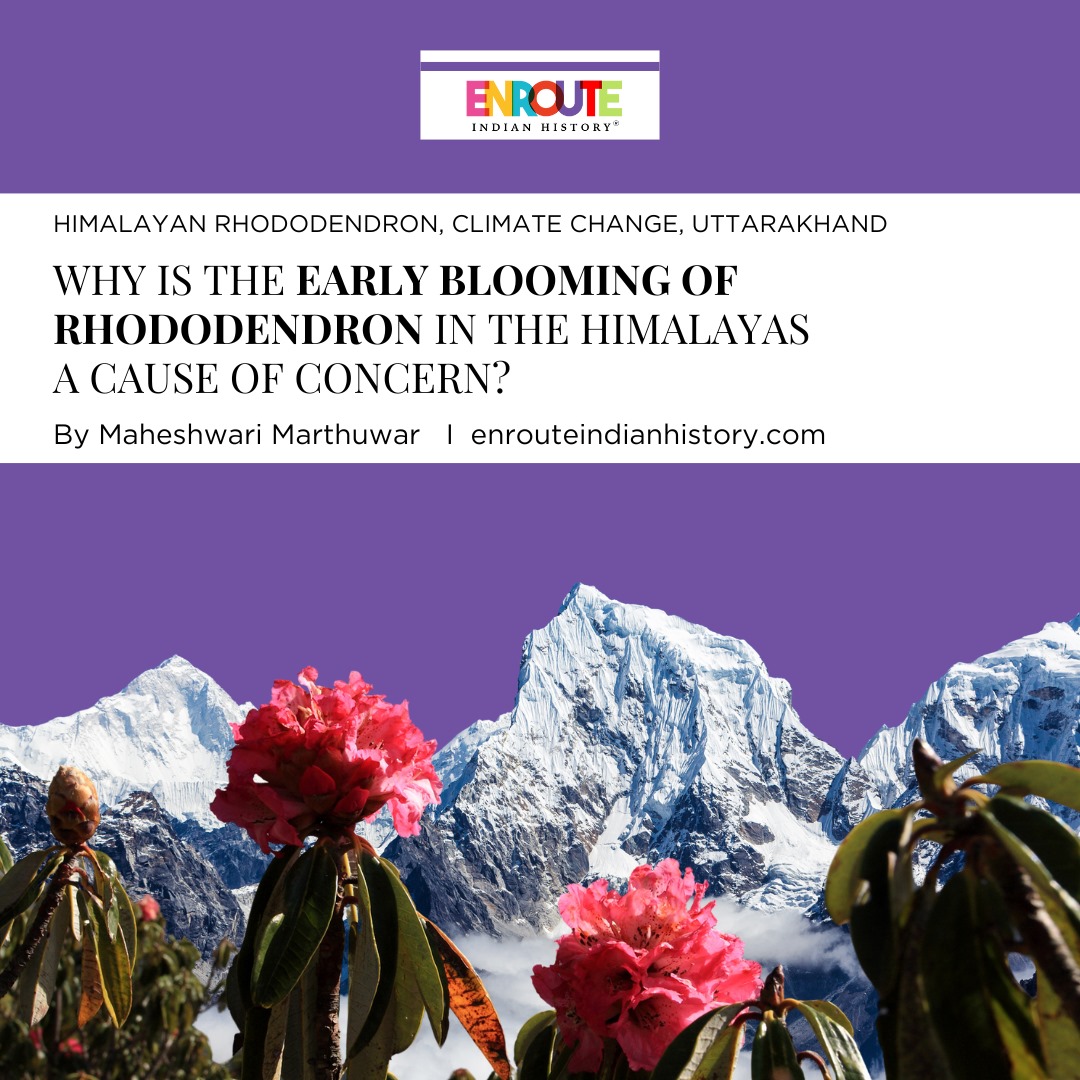Exploring the 10th century Uthiramerur Inscription and its insights into self-governance
- enrouteI
- May 2, 2024

The Uthiramerur inscriptions stand as enduring testaments to the administrative prowess and democratic ethos prevalent in tenth-century South India under the Chola dynasty. These inscriptions, etched in stone and preserved through centuries, illuminate the intricacies of governance and offer invaluable insights into the democratic ideals upheld during this period. This introduction sets the stage for an in-depth exploration of the democratic principles and governance structures elucidated in the Uthiramerur inscriptions, elucidating their significance in shaping early South Indian society.

(Source: https://blogger.googleusercontent.com/img/b/R29vZ2xl/AVvXsEgaEaIvpvYRZqybWhT8TwKsCl2E5b8KehFCVcn328iEtwHAiv5spmmYbL70difHF4bBoTI9B5ysXjzeP_I7gL9xqdVzm3jVYaAhiGOvp0yUDmbVcSHIOjSd7bxLIuvTqkRdq3GFCvxuDKKV/s1600/109_1270.JPG)
Participatory Decision-Making: The Uthiramerur inscriptions illuminate a vibrant tradition of participatory decision-making, where community members actively engaged in governance processes. Central to this participatory model were the Gram Sabha and the Ur, representing distinct social groups but collaborating to govern effectively. The Gram Sabha, comprising Brahmins, and the Ur, encompassing diverse social strata, convened to deliberate on matters ranging from land allocation to tax collection. By providing platforms for inclusive deliberation and consensus-building, these assemblies fostered a sense of ownership and collective responsibility among community members.
Decentralised Administration: At the heart of the Uthiramerur governance system lay a decentralised administrative structure, characterised by the establishment of local bodies known as Variyams. These Variyams, comprised of carefully selected individuals, were entrusted with executive powers and specific responsibilities, ranging from land management to dispute resolution (Sengupta, 2023). By delegating authority to these grassroots-level institutions, the governance system ensured responsiveness to local needs and promoted effective service delivery. Moreover, the inscriptions delineate clear guidelines for the selection and functioning of Variyams, underscoring the importance of transparency and accountability in governance.
Expanding further, the Uthiramerur inscriptions offer a blueprint for effective governance that transcends time and place. By fostering community participation and consensus-building, these inscriptions demonstrate the importance of inclusivity and representation in decision-making processes. Moreover, the decentralised administrative structure outlined in the inscriptions underscores the significance of empowering local institutions to address grassroots-level concerns and promote sustainable development. Additionally, the emphasis on ethical conduct and justice in governance reflects a commitment to upholding integrity and accountability in public service—a lesson that resonates strongly in contemporary governance contexts. As societies navigate complex challenges and aspire towards greater social cohesion and progress, the Uthiramerur inscriptions serve as a timeless reminder of the enduring values of democracy, transparency, and ethical leadership. By drawing inspiration from these ancient governance principles, modern policymakers and leaders can strive towards building more resilient, equitable, and responsive governance systems that uphold the principles of justice, fairness, and the common good.

(Source: https://www.argumentativeindians.com/post/were-seeds-of-democracy-sown-in-ancient-india)
Ethical Conduct and Justice: Ethical conduct and justice formed the bedrock of governance in ancient South India, as evidenced by the Uthiramerur inscriptions’ emphasis on moral integrity and accountability. The inscriptions outline codes of conduct for public officials, prescribing stringent penalties for misconduct and malfeasance. By upholding ethical standards and ensuring accountability, the governance system sought to safeguard the welfare of the community and maintain social order (Sengupta, 2023). Additionally, punitive measures, such as fines and public shaming, were employed to deter antisocial behaviour and uphold the rule of law. While these punishments may appear harsh by contemporary standards, they were instrumental in fostering a sense of collective responsibility and reinforcing societal norms.
The Uthiramerur inscriptions provide profound insights into early democratic governance in South India, highlighting the enduring principles and practices that underpinned governance during the Chola period. By elucidating participatory decision-making, decentralised administration, and ethical conduct, these inscriptions offer invaluable lessons for contemporary governance. As modern societies strive to cultivate inclusive, accountable, and transparent governance systems, the Uthiramerur inscriptions serve as a beacon of inspiration, reminding us of the timeless relevance of democratic ideals in fostering collective welfare and societal progress.
References
CivilsDaily. (2023). Uthirameur Inscription: Ancient Tamil proof of Democratic Provisions. [online] Available at: https://www.civilsdaily.com/news/uthirameur-inscription-tamil-democratic/#:~:text=Uthiramerur%20inscriptions%20are%20a%20set,large%20part%20of%20South%20India. [Accessed 29 Apr. 2024].
Sengupta, A. (2023). What the Uttaramerur inscription, recently referred to by PM Modi, says. [online] The Indian Express. Available at: https://indianexpress.com/article/explained/explained-history/uttaramerur-inscription-pm-modi-8556704/ [Accessed 29 Apr. 2024].
balancedreport (2023). The Inscription of Uthirameur: An Ancient Tamil Proof of Democratic Provisions — Balanced Report. [online] Balanced Report. Available at: https://balancedreport.in/the-inscription-of-uthirameur-an-ancient-tamil-proof-of-democratic-provisions/ [Accessed 29 Apr. 2024].
- May 15, 2024
- 6 Min Read


























